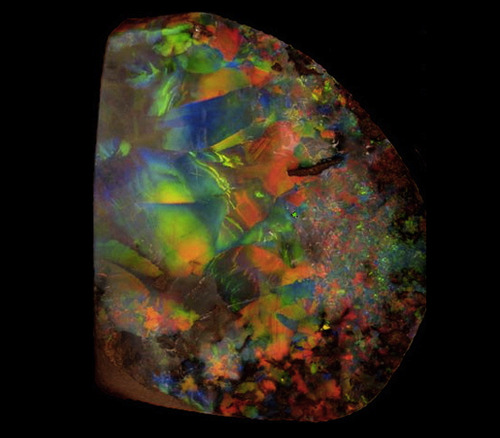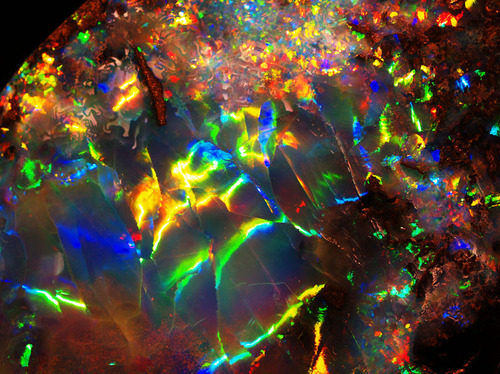Today is the first day of October and opal is the month's official birthstone. Opals are special because they all have their own DNA and no two opals are exactly alike. An opal's internal structure makes it diffract light, causing the gem to shine and sparkle in an ever-changing kaleidoscope of colors that experts describe as “opalizing." In some of the finest opals, every color of the spectrum is visible.
Two of the most famous opals in the world are the Galaxy, which was certified by the Guinness Book of World Records as the world's largest polished opal at 3,749 carats, and an unnamed specimen in the collection of the Houston Museum of Natural Science that's purported to be one of the finest boulder opals ever mined.

Even though 97% of the world's opal supply comes from Australia, the Galaxy was discovered at the Boi Morto Mine in northeastern Brazil in 1976. Carved from a grapefruit-sized piece of rough weighing 5,205 carats, the final specimen is said to resemble a child's head and measures 5 1/2 x 4 x 1 5/8 inches. Today, the polished stone is valued at more than $1 million and is part of a private collection.

Headlining at the Lester and Sue Smith Gem Vault at the Houston Museum of Natural Science is one of the largest and most beautiful boulder opals ever mined. Discovered at the Opalville Mine in Queensland, Australia, the 2,765-carat opal gleams like a lava lamp, with brilliant flashes of red, yellow, green and blue.
According to the museum, the tale behind the immense unnamed opal reads like the plot of The Treasure of the Sierra Madre. Apparently, after three miners won and lost the opal in a series of poker games, it wound up locked in a vault for nearly 20 years as the miners worked out a legal dispute. When the suit was finally settled, the owner was anxious to sell the stone.
"A guy walked into the museum with it in a cardboard box, and we acquired it," revealed museum board member and benefactor Lester Smith.
Of all the opals mined in Australia, 90% is considered "light opal," defined as the most common white or crystal opals. The white variety makes up 60% of the opal production and crystal opal makes up 30%. The much rarer and more valuable varieties are black (8%) and boulder (2%).

Above: Black opal, semi-black opal, boulder opal, crystal opal and white opal. Source: www.opalsdownunder.com.au
No comments:
Post a Comment